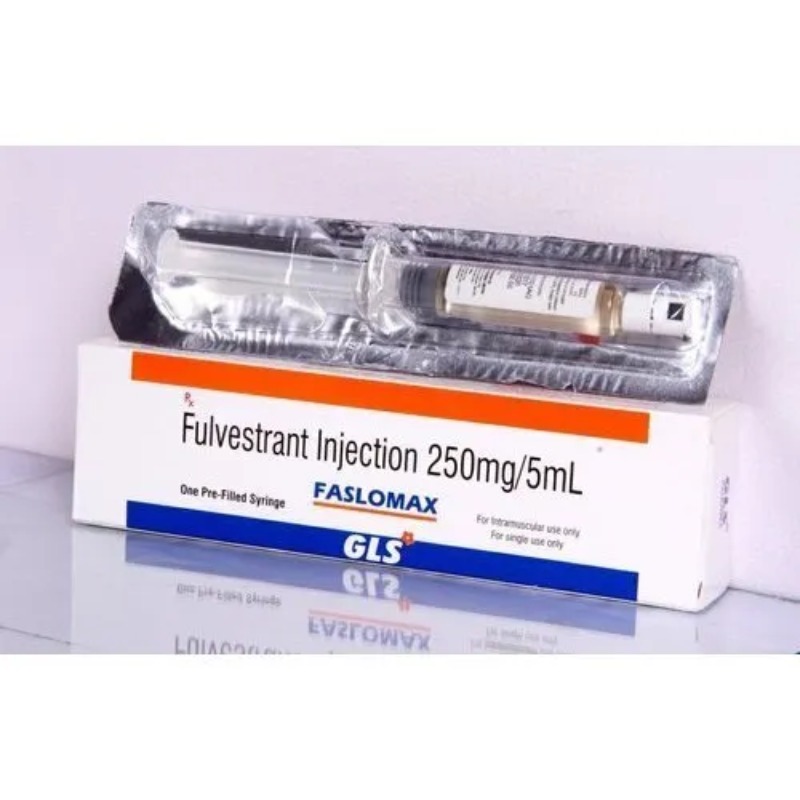DESCRIPTION
Fulvastrant
CLASSIFICATION Estrogen receptor antagonist
MECHANISM OF ACTION
• Potent and selective antagonist of the estrogen receptor (ER) with no known agonist effects. Affinity to the ER is comparable to that of estradiol.
• Downregulates the expression of the ER, presumably through enhanced degradation.
ABSORPTION
Not absorbed orally. After IM injection, peak plasma levels are achieved in approximately 7 days and are maintained for at least 1 month.
DISTRIBUTION
Rapidly and widely distributed throughout the body. Approximately 99% of drug is bound to plasma proteins, and very high-density lipoprotein (VHDL), low-density lipoprotein (LDL), and high-density lipoprotein (HDL) are the main binding proteins.
INDICATIONS
1. Metastatic breast cancer—Treatment of hormone receptor (HR)–positive, HER2-negative advanced breast cancer in postmenopausal women not previously treated with endocrine therapy.
2. Metastatic breast cancer—Treatment of HR-positive metastatic breast cancer in postmenopausal women with disease progression following endocrine therapy.
3. Metastatic breast cancer—Treatment of HR-positive, HER2-negative advanced or metastatic breast cancer in combination with palbociclib or abemaciclib in women with disease progression following endocrine therapy.
4. Metastatic breast cancer—Treatment of HR-positive, HER2-negative advanced or metastatic breast cancer in combination with ribociclib in post-menopausal women as initial endocrine-based therapy or following disease progression on endocrine therapy.
DOSAGE RANGE
Recommended dose as monotherapy and in combination with palbociclib, abemaciclib, or ribociclib is 500 mg IM on days 1, 15, 29 and once monthly thereafter.
DRUG INTERACTIONS
None well characterized to date.
SPECIAL CONSIDERATIONS
1. No dose adjustments are required for patients with renal dysfunction.
2. No dose adjustments are required for patients with mild liver dysfunction.
In patients with moderate liver dysfunction (Child-Pugh Class B), a dose of 250 mg IM is recommended on days 1, 15, 29, and once monthly
thereafter. The safety and efficacy of fulvestrant have not been studied in patients with severe hepatic impairment.
3. Use with caution in patients with bleeding diatheses, thrombocytopenia, and/or in those receiving anticoagulation therapy.
4. Fulvestrant can interfere with measurement of serum estradiol levels by immunoassay, which can result in falsely elevated estradiol levels.
5. Pregnancy category D. Breastfeeding should be avoided, as it is not known whether fulvestrant is excreted in human milk.
TOXICITY 1
Asthenia occurs in up to 25% of patients.
TOXICITY 2
Mild nausea and vomiting. Constipation and/or diarrhea can also occur.
TOXICITY 3
Hot flashes seen in 20% of patients.
TOXICITY 4
Mild headache.
TOXICITY 5
Injection site reactions with mild pain and inflammation that are usually transient in nature.
TOXICITY 6
Back pain and arthralgias. Flu-like syndrome in the form of fever, malaise, and myalgias. Occurs in 10% of patients.
TOXICITY 7
Dry, scaling skin rash.
SPECIFICATION


Login To Comment